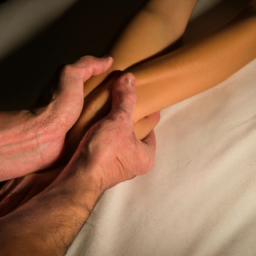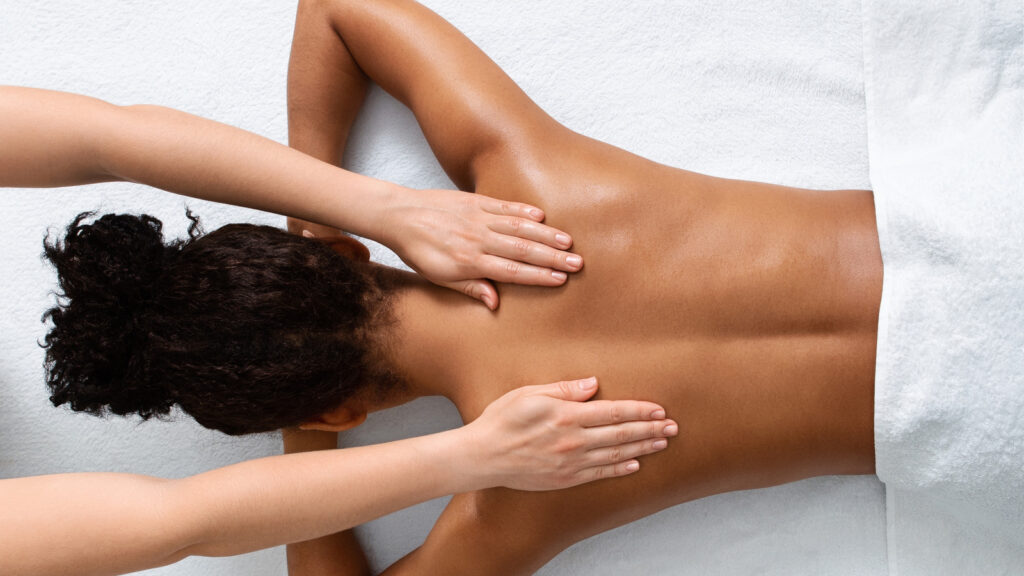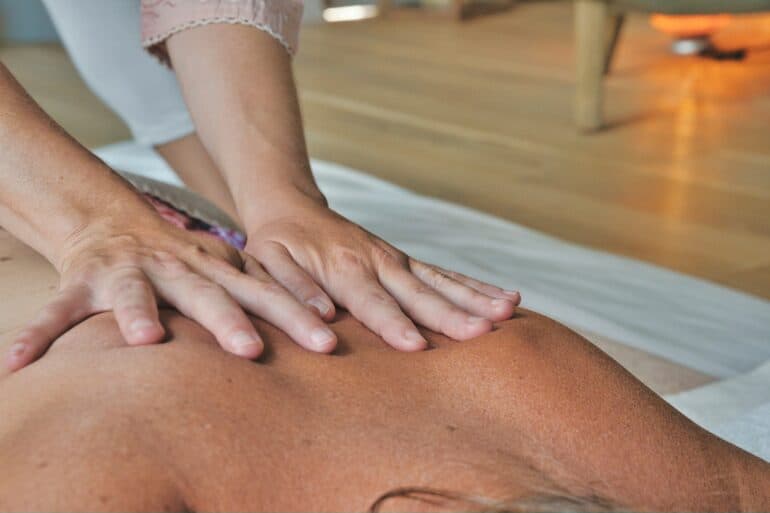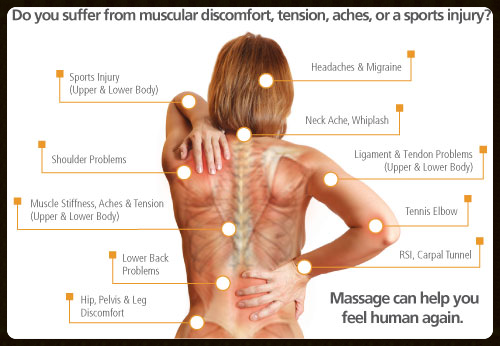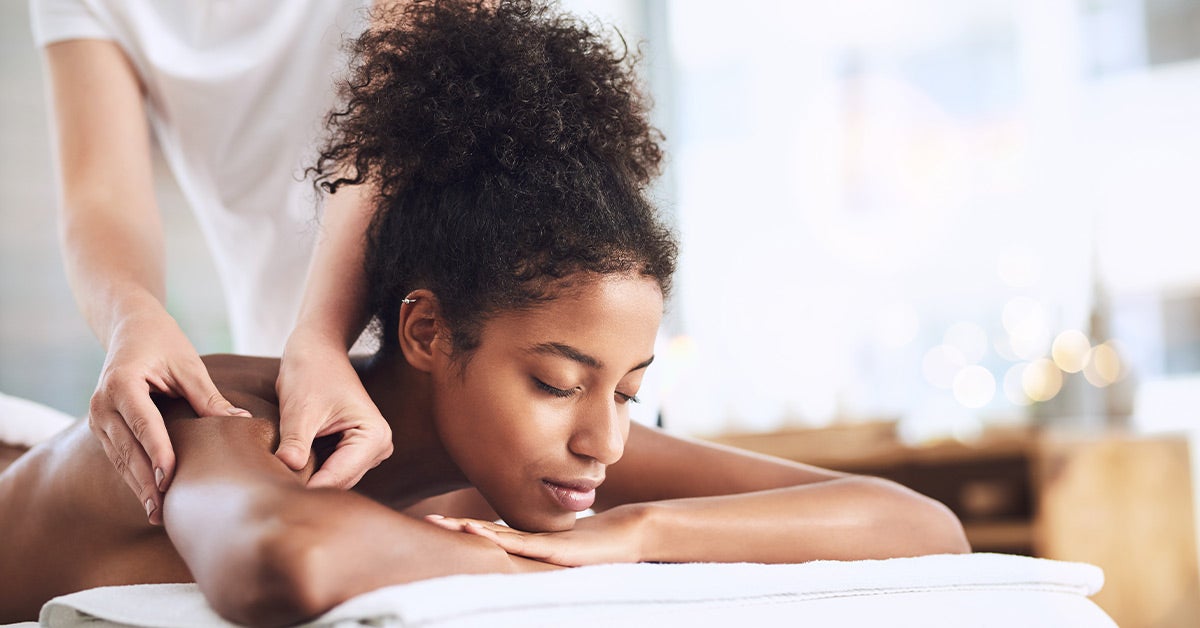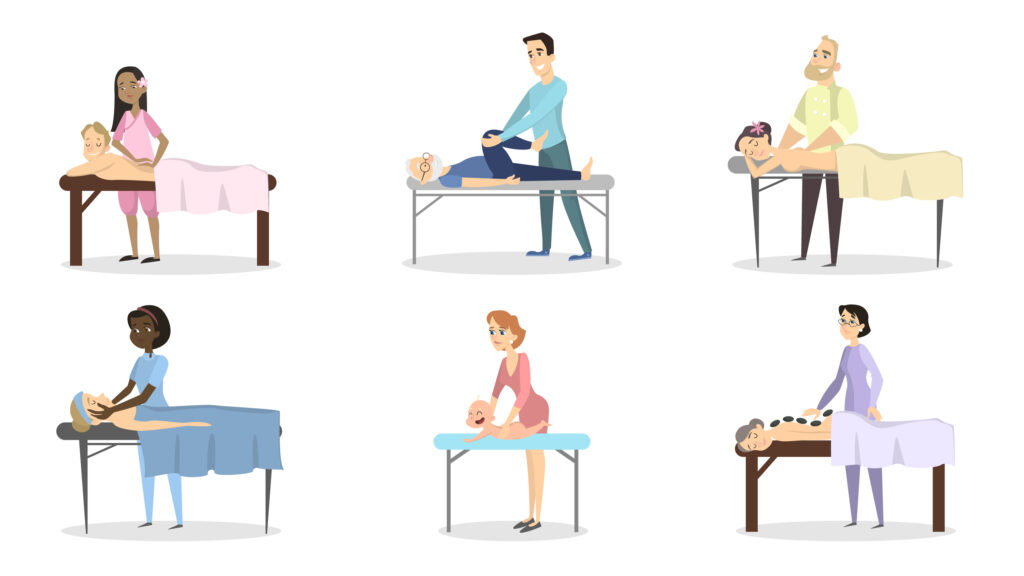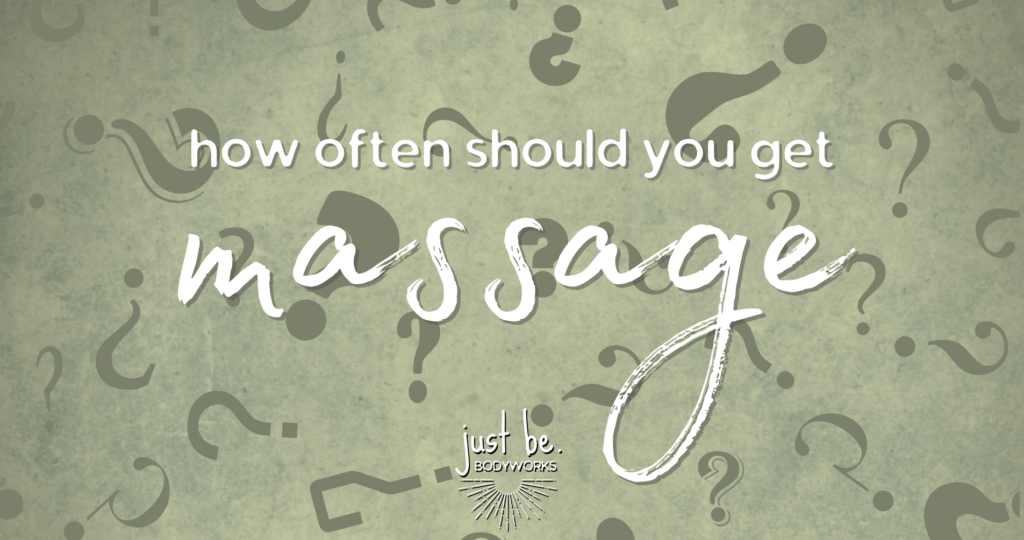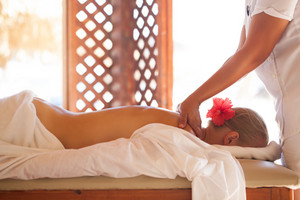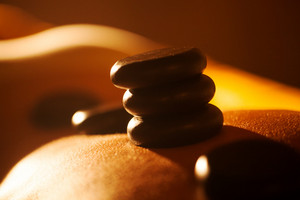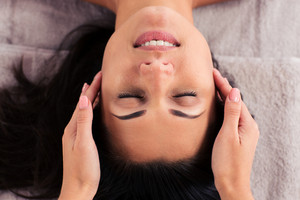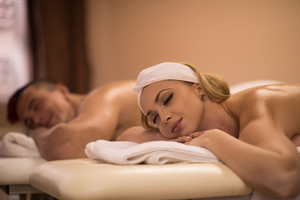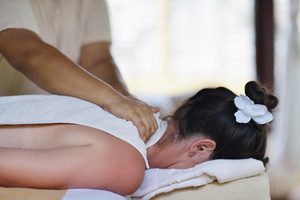Have you ever wondered how long the effects of a massage actually last? Well, you’re not alone! Many people are curious about this topic, and as massage enthusiasts ourselves, we decided to dive deeper into the subject. In this article, we will discuss the duration of the effects of a massage, different factors that can impact how long they last, and some tips on how to prolong and maximize the benefits of your massage experience. So, if you’re ready to learn more, read on!
When it comes to the lasting effects of a massage, there isn’t a one-size-fits-all answer. The duration can vary depending on various factors such as the type of massage received, the specific needs and conditions of the individual, and their overall lifestyle and habits. For example, a relaxation massage might have immediate effects that can last for a couple of hours, while a deep tissue massage targeting specific areas of tension and pain can provide relief for a few days. Of course, everyone’s experience may differ, but understanding these factors can give you a general idea of what to expect.
Besides the type of massage, other factors can also influence how long the effects last. Regularity of massage sessions plays a significant role. Just like any other form of self-care, consistency is key. Incorporating massages into your routine can help to build upon the benefits and extend their effects over time. Additionally, taking care of your body between massages by practicing good postural habits, managing stress levels, staying hydrated, and engaging in physical activities can also contribute to prolonging the positive outcomes of your massage.
In conclusion, the effects of a massage can vary from person to person, depending on several factors. The type of massage, the individual’s specific needs and lifestyle choices, and the regularity of sessions all play a role in determining how long these effects last. It’s important to remember that a massage is not a one-time fix, but rather a part of an ongoing self-care routine. By understanding and incorporating these factors into your massage experience, you can optimize the benefits and enjoy the effects for an extended period.
What are the immediate effects of a massage?
Relaxation and stress reduction
When you lie down on a massage table and feel the therapist’s hands working their magic, you immediately start to feel a sense of relaxation and stress reduction. The gentle strokes and kneading techniques can help calm your nervous system, releasing tension and promoting a sense of tranquility. The soothing ambiance and calming music also contribute to the overall relaxation experience.
Improved blood circulation
One of the immediate effects of a massage is the improvement in blood circulation throughout your body. The kneading, rubbing, and pressing motions applied by the therapist help stimulate the blood vessels, enhancing blood flow to your muscles and tissues. This increased circulation brings oxygen and nutrients to the cells while removing waste products, resulting in improved overall health and vitality.
Relief from muscle tension and pain
Muscle tension and pain can be caused by a variety of factors, such as poor posture, injuries, or stress. A skilled massage therapist can target specific areas of muscle tension and apply techniques to release the knots and tightness. The manipulation of the soft tissues not only loosens these tense muscles but also encourages the release of endorphins, the body’s natural painkillers. As a result, you may experience immediate relief from pain and improved flexibility.
How long do the immediate effects last?
Immediate relaxation effects
The immediate relaxation effects of a massage can last anywhere from a few hours to a few days. The duration may vary depending on the individual and the intensity of the massage. Some people may find themselves feeling relaxed and rejuvenated for several days after a massage, while others may notice the effects wearing off sooner. It is important to note that the benefits can be prolonged with regular massages.
Blood circulation improvement duration
The improvement in blood circulation that occurs during a massage can last for a few hours to a few days. The increased blood flow helps deliver oxygen and nutrients to the cells, promoting healing and rejuvenation. However, as the body returns to its normal state, the effects of improved circulation may gradually diminish. To maintain the benefits, regular massages are recommended.
Muscle tension and pain relief duration
The duration of muscle tension and pain relief can vary depending on the individual and the severity of the issue. For some, the relief may last for a few days, allowing them to enjoy a period of reduced discomfort and increased mobility. However, for chronic conditions or more severe muscle tension, the relief may be temporary, and regular massages may be necessary to manage the symptoms effectively.
What are the long-term effects of a massage?
Overall stress reduction
Regular massages can have a profound impact on overall stress reduction. By incorporating massages into your routine, you provide your body with a consistent opportunity to relax and unwind. Over time, this can help lower stress hormone levels, increase feelings of well-being, and improve your ability to manage stress in everyday life.
Improved immune system
Stress has a negative impact on the immune system, making us more susceptible to illness and infection. The long-term effects of regular massages include a strengthened immune system. A study published in the Journal of Alternative and Complementary Medicine found that massage therapy boosts the production of white blood cells, which are essential for fighting off pathogens and maintaining a healthy immune system.
Enhanced mental well-being
Massage therapy is not only beneficial for your physical health but also for your mental well-being. It can help reduce symptoms of anxiety and depression by promoting the release of serotonin and dopamine, hormones that contribute to feelings of happiness and relaxation. Regular massages can also improve sleep quality, increase mental clarity, and enhance overall mood.
How long do the long-term effects last?
Long-term relaxation effects
The long-term relaxation effects of regular massages can be experienced for an extended period of time. By incorporating massages into your self-care routine on a consistent basis, you can promote a state of relaxation and calm that lasts beyond the massage session. The more frequently you receive massages, the more likely you are to experience sustained relaxation effects.
Maintaining improved immune system
To maintain the improved immune system benefits of a massage, it is recommended to receive regular massages. The exact duration of the immune-boosting effects can vary from person to person, but frequent massages can help support your immune system in the long run. Along with regular massages, practicing other healthy habits, such as eating a balanced diet and exercising regularly, can further enhance your immune system.
Sustained mental well-being
The sustained mental well-being effects of regular massages can be experienced for an extended period of time. By incorporating massages into your self-care routine, you can create a positive impact on your mental health and well-being. However, it is important to note that the effects may gradually diminish if you do not maintain a consistent massage schedule. Regular massages, combined with other self-care practices, can help prolong the mental well-being benefits.
Factors influencing the duration of massage effects
Frequency and regularity of massages
The frequency and regularity of massages play a crucial role in determining how long the effects will last. Regular massages provide continuous benefits, helping your body and mind adjust and adapt to the therapeutic process. The more consistent you are with your massage schedule, the longer you can enjoy the lasting effects.
Individual physiology and health conditions
Every individual’s physiology and health conditions are unique, which can influence the duration of massage effects. Factors such as age, overall health, and pre-existing conditions can affect how long the benefits of a massage will last for a particular individual. It is important to communicate with your massage therapist about any concerns or health issues you may have to ensure a personalized treatment plan.
Type and intensity of massage techniques
The type and intensity of massage techniques used can also impact the duration of massage effects. Different types of massages have varying levels of pressure and target different areas of the body. For example, a deep tissue massage may provide longer-lasting relief from muscle tension compared to a lighter Swedish massage. Discuss your goals and preferences with your massage therapist to determine the most effective techniques for your needs.
Tips for maximizing the duration of massage effects
Follow a consistent massage schedule
To maximize the duration of massage effects, it is essential to follow a consistent massage schedule. Whether it’s once a week, once every two weeks, or once a month, find a frequency that works for you and stick to it. Consistency allows your body to adjust and adapt to the therapeutic benefits of the massage, enhancing the lasting effects.
Take care of your overall health
In addition to regular massages, taking care of your overall health can help maximize the duration of massage effects. Eat a balanced diet, stay hydrated, get regular exercise, and prioritize quality sleep. By maintaining a healthy lifestyle, you create a conducive environment for your body to reap the long-term benefits of massage therapy.
Communicate with your massage therapist
Effective communication with your massage therapist is vital in maximizing the duration of massage effects. Share your goals, areas of concern, and any changes you may have noticed in your body since starting massage therapy. Your therapist can then tailor the sessions to address your specific needs and provide recommendations to sustain the effects of the massage between sessions.
Different types of massages and their lasting effects
Swedish massage
A Swedish massage is known for its gentle and relaxing techniques. The immediate effects, such as relaxation and stress reduction, can last for several hours after the session. The long-term effects, including overall stress reduction and improved mental well-being, can be experienced with regular Swedish massage sessions.
Deep tissue massage
Deep tissue massage primarily focuses on targeting deeper layers of muscles and connective tissues. The immediate effects of a deep tissue massage, such as muscle tension and pain relief, can last for a few days. Regular deep tissue massage sessions can provide sustained relief and aid in the long-term management of chronic muscle issues.
Hot stone massage
Hot stone massage involves the use of heated stones placed on specific areas of the body. The immediate effects of a hot stone massage, including relaxation and improved blood circulation, can last for a few hours. Regular hot stone massage sessions can help maintain these effects, promote overall stress reduction, and enhance mental well-being.
Aromatherapy massage
Aromatherapy massage combines the benefits of massage therapy with the use of essential oils. The immediate effects of an aromatherapy massage, such as relaxation and stress reduction, can last for several hours. Regular aromatherapy massage sessions can contribute to sustained relaxation and overall well-being.
How to prolong the effects of a massage at home?
Practice self-care activities
To prolong the effects of a massage at home, it is important to practice self-care activities. This can include stretching exercises, warm baths with Epsom salts, using a foam roller, or using self-massage tools. These activities help maintain muscle flexibility, reduce tension, and promote relaxation between massage sessions.
Maintain good sleep patterns
Good sleep patterns are crucial in maximizing the effects of a massage. Aim for consistent and quality sleep by establishing a regular sleep schedule, creating a comfortable sleep environment, and practicing relaxation techniques before bedtime. Quality sleep allows your body to fully benefit from the healing and rejuvenating effects of a massage.
Incorporate relaxation techniques
Incorporating relaxation techniques into your daily routine can help prolong the effects of a massage. This can include practicing deep breathing exercises, mindfulness meditation, or engaging in activities that bring you joy and relaxation, such as reading a book or taking a nature walk. These techniques help reduce stress, promote relaxation, and extend the benefits of a massage.
Conclusion
The duration of massage effects varies from person to person and depends on various factors, including the type and intensity of the massage, individual physiology, and health conditions. The immediate effects of a massage, such as relaxation, improved blood circulation, and muscle tension relief, can last for hours to days. The long-term effects, including overall stress reduction, improved immune system, and enhanced mental well-being, can be experienced with regular massages.
To maximize the duration of massage effects, it is important to follow a consistent massage schedule, take care of your overall health, and communicate with your massage therapist. Different types of massages offer varying benefits, and incorporating self-care activities and relaxation techniques can help prolong the effects of a massage at home. Remember, regular massages and a healthy lifestyle contribute to sustained effects, ensuring you continue to enjoy the numerous benefits of massage therapy. So why wait? Book your next massage session and experience the lasting effects today!
